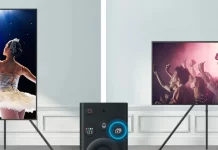Subfield Motion is a proprietary technology used in Samsung plasma TVs to improve picture quality and reduce blurring in dynamic scenes. Samsung trademarked this commercial name, but since the discontinuation of plasma TV production in 2012, it is only found in older models.
Frame rate in the analog and plasma TV era
In the analog television era, an image’s frame rate was tied to the frequency of the power grid, which was used as a synchronization reference. For this purpose, half a period of alternating current was used, allowing video to be transmitted at 25 Hz in countries with a grid frequency of 50 Hz, such as Europe, and 30 Hz in countries with a grid frequency of 60 Hz, such as the United States and Canada.
With the advent of digital television, a display frame rate standard of 60 frames per second was established. This standard inherited the capabilities of flat computer screens, and since plasma TVs supported 60 Hz, it allowed for improved picture quality, especially for content with low original frame rates.
How Subfield Motion Works
Don’t be fooled by advertising promises that the TV supposedly creates intermediate or extra frames to enhance dynamic scenes. It doesn’t. The TV does not have enough processing power to create unique intermediate frames.
Subfield Motion technology works on the principle of consistently showing the same frame multiple times, which creates the illusion of a smooth picture. This approach can lead to the so-called “soap opera effect,” where the motion on the screen appears excessively smooth and artificial.
Dynamic scenes may also have black frames inserted between the mainframes, depending on the content. This technique helps the eye “erase” the previous image from the retina faster, making the frame change more distinct and reducing image blurring.
For marketing purposes, big numbers are used to impress the buyer, like Subfield Motion 400Hz or Subfield Motion 600Hz; some models had an index of 1000Hz. Of course, this did not correspond to reality; the frame rate did not exceed 60Hz, but it did not matter, as the technology was heading for the sunset.






